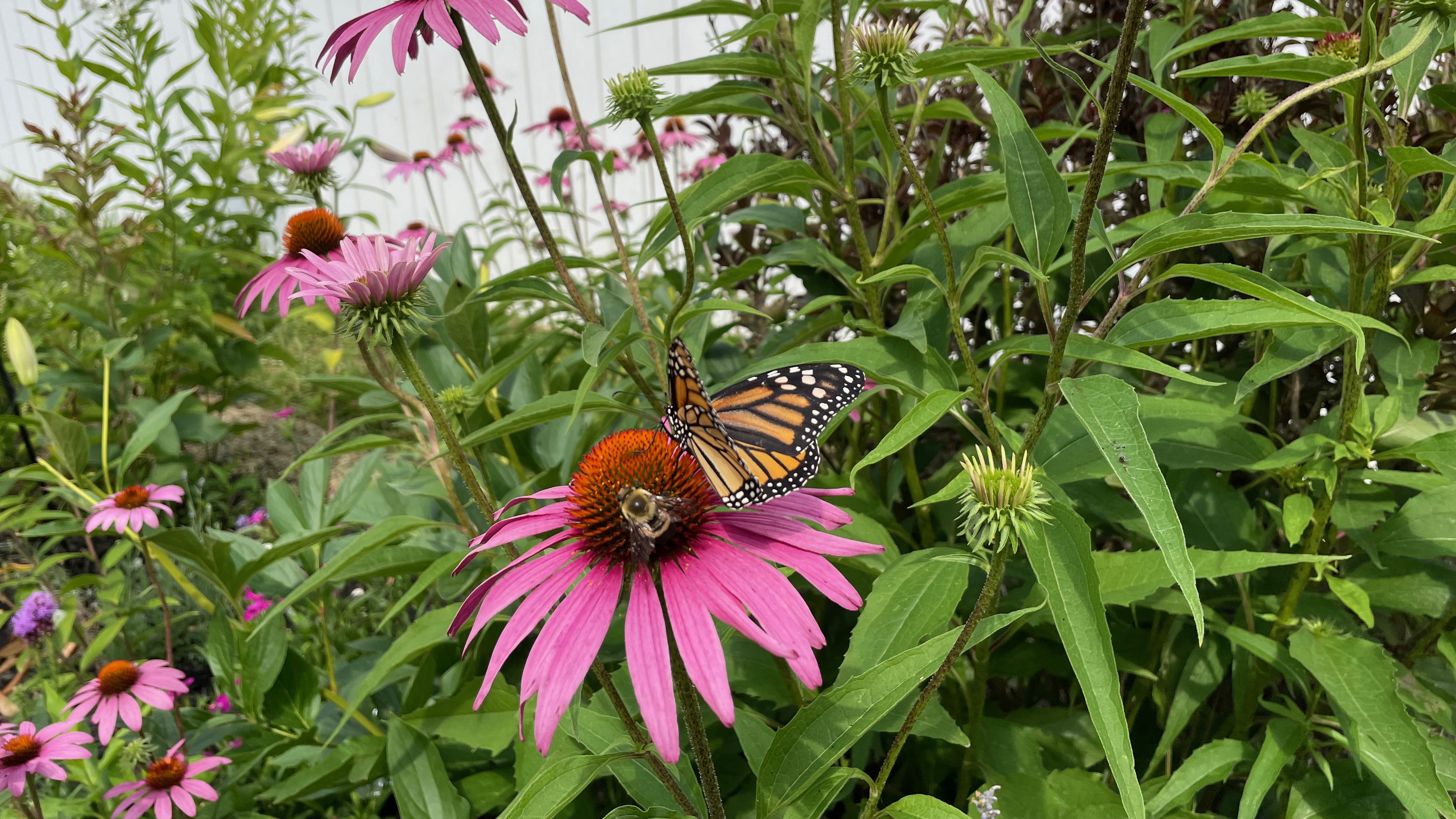Plant a Native Garden
Farmers’ markets have become quite popular in the last decade or two. Each growing season I visit several markets on Maryland’s Eastern Shore from Havre de Grace to Easton and love buying fresh healthy produce from these small farms. I often strike up conversations with the farmers, who have given me useful tips on everything from gardening books to growing my own crops to the importance of caring for the land.
A critical part of the labyrinth that makes up our food-growing pyramid is pollinators. For a variety of reasons, pollinators are under attack. Loss of habitat, invasive plant species, and chemical sprays have taken a toll on both beneficial and so-called harmful bugs. It has taken me most of the last 12 years growing my own veggies to learn how to attract and support pollinators. I recently read Doug Tallamy’s book, Nature’s Best Hope: A New Approach to Conservation That Begins in Your Yard, which highlights the impact we individual homeowners can have on the environment.
Professor Tallamy shares with readers how we can support nature by encouraging and cultivating native plants in our yards. These native plants help butterflies, bees, moths, mammals, and birds, which, in turn, helps us grow crops.
“We need pollinators everywhere, they are extremely important even if you don’t live next to a farm,” Tallamy told me.
I’ve added native plants in my backyard garden over the last two years and have seen exceptional results. My veggie garden now has a supporting cast of native flowers and non-natives that bring beneficial insects and birds to my garden. When a garden is in balance with nature, chemical pesticides and herbicides are not needed.
According to Tallamy, if enough homeowners plant natives, the whole eco-system benefits. He points out that across America much of homeowner land is given over to lawns, which don’t usually support birds, bees, and native animals (with the possible exception of robins), and also require a tremendous amount of chemicals and water.
But don’t panic — there is much you can do to support pollinators while keeping your lawn. Planting even a modest native garden of 10 feet by 4 feet can turn your backyard into a small wildlife preserve that supports the web of life our planet needs to be healthy. And you’ll notice pollinators and birds you’ve not seen previously in your yard.
One of the side benefits to having a yard more in balance with nature is the wonderful entertainment value. To see a swallowtail or monarch butterfly lay eggs is a miracle to behold. Then to see those eggs hatch into colorful caterpillars is captivating. But the biggest thrill is to see YOUR caterpillars form a chrysalis then hatch into a gorgeous butterfly and take off to pollinate local plants.
Imagine hundreds of backyards with small native gardens where previously there was only lawn and non-native plants supporting the environment across Delmarva. Our local farm crops like cucumbers, melons, berries, tree fruits, squashes, tomatoes, peppers, and other produce will have angels on wings to enhance pollination that provides a bountiful harvest at our local farmers markets.
Worried that this NATIVE wildlife will be a nuisance? Fear not. From my experience, there has not been an abundance of bad bugs or critters in my yard. In the excellent book, Vegetables Love Flowers by Lisa Mason Ziegler, the author details the balance we get when a garden is planted properly. Following the guidance in Ziegler’s book, I not only saw my veggie production improve, I also had an abundance of beautiful flowers to pick from June to November. With guidance from this book and my local Audubon Society chapter, I was able to turn my backyard into a vibrant ecosystem where once there was only green grass and scarce wildlife.
Getting Started
There are many places on the Delmarva Peninsula you can visit to learn how to plant a native pollinator garden. I recommend starting small until you get the hang of planting natives. A successful pollinator garden might also include a few non-native plants, like those at the Arboretum of Salisbury University’s pollinator gardens. It’s also helpful to visit a nursery that specializes in native plants, like Inland Bays Garden Center in Frankford, Delaware, to learn which native plants will work best on your property.
Inland Bays Garden Center, 38320 Muddy Neck Road, Frankford, DE
Mill Pond Garden, 31401 Melloy Ct, Lewes, DE
Arboretum of Salisbury University, Salisbury, MD Instagram
Blackwater National Wildlife Refuge, 2145 Key Wallace Drive, Cambridge, MD Facebook
A wealth of native plant gardening knowledge is available at your local bookstore and online, including Professor Doug Tallamy’s grassroots call-to-action to regenerate biodiversity. Visit homegrownnationalpark.org to learn more.
Once you get going, you will find there are thousands of private property owners going native. By joining those homeowners who have adopted native plants, nature and our local farmers will benefit.









